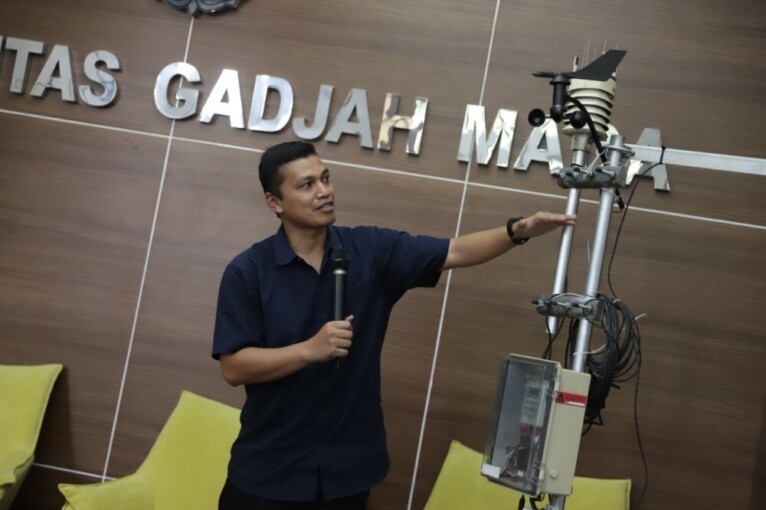
Researcher of Universitas Gadjah Mada (UGM) made a breakthrough by developing a smart farming to calculate greenhouse gas emissions in agricultural lands.
The technology is developed by Agricultural and Biosystem Engineering lecturer, Bayu Dwi Apri Nugroho, Ph.D. This technology can calculate the level of methane (CH4), carbon dioxide (CO2), and ammonium (NH4) levels produced in agricultural lands.
Bayu said during this time smart farming was always oriented to precision farming or on-farm. While, actually data obtained from the sensors installed in the land can be used to calculate information other than those of on-farm, including greenhouse gas emissions.
“During this time calculation of greenhouse gas emission is done manually and from secondary data estimation, which are referenced to the guidelines from the Intergovernmental Panel on Climate Change (IPCC). While in fact, in reality, the carbon emissions may exceed the prediction,” he said to reporters during a press conference done in Fortakgama room UGM on Monday (16/12).
Agricultural sector, according to Bayu, became one of the contributors of gas emission or around 24 percent which is increasing from year to year. Seeing this condition, Bayu made a calculation by using the data from the sensors in real time and updated, such as data related to climate, ground parameters, and plant growth. These can be used to evaluate irrigation system and calculate the greenhouse gas emission concentration.
Data can then be obtained to calculate the emission through the telemetry. These are processed in artificial neural networks (ANN) to get the reduced emission value in the land.
This technology is built with 5 sensors in the field monitoring system (FMS), which are pyranometer, anemometer, humidity and temperature, rain, and soil humidity. The technology is equipped with Em50 data logger to store the data. There is also the telemetry to send the data from the data logger to the server automatically every day using a modem from telecommunication providers. A camera is also installed to monitor the rice while a solar panel serves as power generator.
Bayu said the technology works when all sensors were connected to the data logger. Measurement is done automatically every 30 minutes and the data will be stored. A field router will get the data each day and send it to the server through the GSM internet networks. The field router will also send location image once a day.
“Users can access all data whether numerical or graphical data, and image or photo from an established website,” he said.
This innovation has been developed since 2016 and tested in the SRI rice demo plot in Kupang, East Nusa Tenggara, in collaboration with Indonesia Climate Change Trust Fund/ICCTF BAPPENAS. In 2018 this technology is applied in East Sumba and FMS development in demo plot in Banjarnegara and Purbalingga with funding from university research of excellence consortium.
The IoT smart farming is expected to support the low carbon building in the country, especially in agriculture. Moreover, the government has stipulated that provinces ought to report their greenhouse gas emission calculations.
“Hopefully, this technology may help achieve environmentally friendly agriculture with precision farming that puts forth efficiency using an information in decision making,” he said.
He also hoped this would benefit the farmers by making it easier for them to cultivate the lands, increasing agriculture productivity and eliminating barriers on the land.

